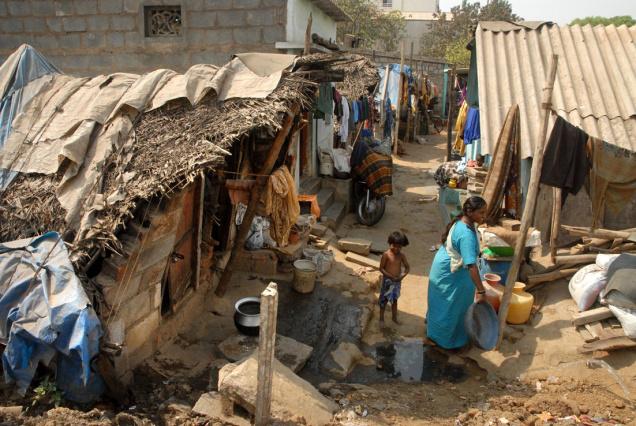

A study says, 60% among the urban population are slum dwellers in the South Asian region, according to a report launched in the capital on Monday .
Among the other South Asian countries, the slum population is 29% in India, 47% in Pakistan and 58% in Nepal, the report says, adding that rapid urbanisation in South Asian countries.
Bangladesh also has the a big number of slum dwellers . Bangladesh, in the past few decades has created a large number of slums in the cities, which contain a large number of people mostly migrated from rural areas.
Titled “Human Development in South Asia 2014 – Urbanisation: Challenges and Opportunities,” the report says the effects of such “unplanned” urbanisation has left the urban population with inadequate facilities.
It created infrastructural challenges and service gaps, including inadequate access to transport, housing, water and sanitation, solid waste management, energy, health and education, the report says.
Bangladesh also has the highest number of urban people living below the poverty line – 21%, as opposed to 14% in India, 13 % in Pakistan, 5% in Sri Lanka and 15% in Nepal, the report states.
The country also experienced the highest rate of urbanisation in the past three decades in South Asia, which is 4.19%, while the urbanisation growth during the same period was 2.87% in India, 3.41% in Pakistan, 0.37% in Sri Lanka, and 5.74% in Nepal.
Speaking at the event, Professor ATM Nurul Amin of North South University said like the other developing countries, Bangladesh could not ensure the basic facilities of urban life to its large number of inhabitants, which made Dhaka city nearly uninhabitable.
A large portion of the city dwellers are living in slums that do not have access to their basic rights, such as fresh water and sanitation, education and health services, which would be ensured if the urbanisation had followed a proper plan, he said.
Urbanization in Bangladesh produced a large number of slums without ensuring facilities due to lack of planning and corruption.
The government’s capital-centric development plan is also a major cause behind such unplanned growth, he said.
But urbanization cannot be stopped as people consider the urban life as civilized and better.
Improving facilities such as quality education and scope of income generation in different sectors should be ensured at the district level, which will ultimately halt the migration to the cities of Dhaka and Chittagong.
সম্পাদক : আনোয়ার হোসেন
প্রকাশক: গোলাম মোস্তফা
১০৮, নিউ এলিফ্যাণ্ট রোড (২য় তলা), ঢাকা-১২০৫ ফোন : 029676292
ই-মেইল : [email protected]